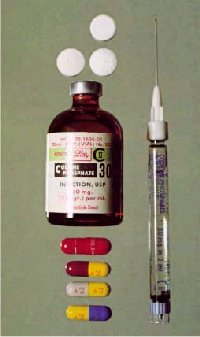April 30th, 2008 · Comments Off on How Codeine Affects History
Background Information| Chemical Structure| How Codeine Works in the Body| Recreational Use| How Codeine Affects History
- Codeine is the first opiate derivative that has been made an over the counter drug.
- Despite its addictive nature, codeine is still a weak enough opiate that it’s the most prescribed drug in the world.
- Codeine is included in most medications that are needed to relieve pain and also has been added to many cancer and HIV medication which shows that the millions if not billions of people in the world depend on the drug.
- Despite the abuse of the drug recreationally, codeine still has helped the world of science for pain relief drugs.

[Read more →]
Categories: Codeine
Background Information| Chemical Structure| How Codeine Works in the Body| Recreational Use| How Codeine Affects History
- Codeine can be used as a recreational drug, however it has much less abuse potential than some other opiates. When it is taken for recreational use, it is commonly referred to as “cilly” because of the way most people react to it.
- Codeine is the opioid which causes the most itching for a good percentage of users and its presence along with acetylcodeine in illicitly-produced heroin causes most of the itching associated with that drug.

- Codeine in conjunction with anti-nausea medication promethazine in the form of the syrup has become one of the most abused codeine preparations. Although there are various forms of this syrup varying in strengths, the “purple” version is highly publicized and is the most sought after. In this form, 60mg of codeine per liquid ounce is used which makes it the strongest of the codeine syrups. This “Purple Drank” is frequently referenced and praised in the southern rap and Houston-based hip-hop community where it is mixed with the soft drink Sprite.
[Read more →]
Categories: Codeine
Background Information| Chemical Structure| How Codeine Works in the Body| Recreational Use| How Codeine Affects History
- Codeine is a weak opiate agonist that provides relief from pain by blocking the pain signals that are being sent from the brain to affected areas of the body.
- It works on the Central Nervous System (CNS) to inhibit these pain signals. Because the transmission of the pain signals has been impaired, less pain is felt, even if the original source of the pain remains.
- Codeine mimics the effects of endorphins, which are naturally occurring painkilling chemicals produced by the body.

- To experience the painkilling properties of codeine the body has to convert it into morphine. Codeine is absorbed by the gastrointestinal tract, becoming quickly transported to various tissues throughout the body.
- Codeine does not accumulate in body tissues because it is metabolized by the liver and its metabolic products are excreted by the kidneys. The process by which codeine is metabolized is known as glucuronidation. Through O-demethylation the codeine is converted into morphine and through N-demethylation it becomes norcodeine.
- The metabolism rate is approximately 30 mg of codeine in an hour and about 90% of the drug will be excreted from the body within a day. In most people, only about 10% of codeine is transformed into morphine.
[Read more →]
Categories: Codeine
April 30th, 2008 · Comments Off on Chemical Structure
Background Information| Chemical Structure| How Codeine Works in the Body| Recreational Use| How Codeine Affects History
- The chemical formula for codeine is C18H21NO3
- The chemical name for the drug is expoxy-3methoxy-17-methylmorphian-6-ol.
- The alternative names for codeine are methylmorphine and morphine monomethyl ether.
- Boiling Point: 250C (480.F) at 22mm
- Melting Point: 154-156.C (309.2-312.8.F)
- The drug is slightly soluble in water and freely soluble in alcohol
[Read more →]
Categories: Codeine
Background Information| Chemical Structure| How Codeine Works in the Body| Recreational Use| How Codeine Affects History

- Codeine or methylmorphine is a member of the drug class opiates. It’s used for its analgesic, antitussive and antidiarrheal properties.
- Codeine is an alkaloid that was first isolated in 1832 by Jean-Pierre Robiquet.
- It was first discovered as a natural constituent of opium in small concentrations ranging from 0 .3% to 3.0%.
- It’s the most used opiate in the world and most likely the most common drug overall.
[Read more →]
Categories: Codeine




